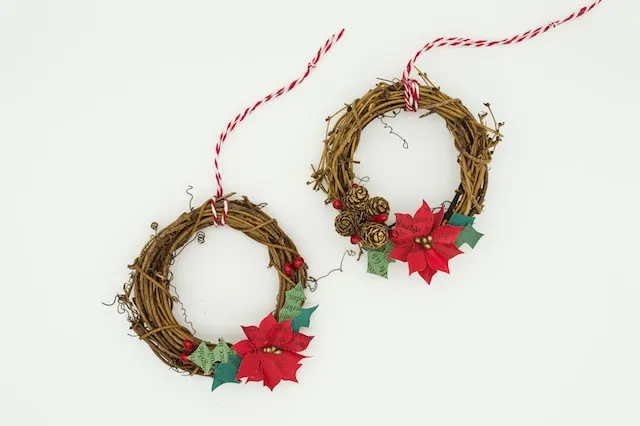If you haven’t read the previous post, I suggest you go back and do it. It’s got a little more context on Advent of Code and it’s a great way to see {aor} in action!
I know said I had exams and papers to write and I wasn’t expecting to write again so soon, but I was told Day 2 was easier than Day 1, so here I am! :)
Day 2: Cube Conundrum
Let’s start by fetching the puzzle and input for Day 2:
> aor::day_start("2023-12-02", "aoc2023/")
✔ Fetched puzzle.
✔ Fetched input.
✔ Created directory aoc2023/02_cube_conundrum
✔ Wrote part 1 to aoc2023/02_cube_conundrum/puzzle.R
✔ Wrote input to aoc2023/02_cube_conundrum/input.txt
ℹ To fetch part 2, run `aor::day_continue("2023-12-02", "aoc2023/02_cube_conundrum/puzzle.R")`Again, there are many ways to solve the puzzle, but I ended up using dplyr and tidyr. Thankfully Day 2 was easier than Day 1; all you had to do was count red, green and blue balls and check some given conditions.
For the first part of the puzzle, you had to find all posible games given a number of balls (so you had to filter out games that exceeded that).
For example, the record of a few games might look like this:
Game 1: 3 blue, 4 red; 1 red, 2 green, 6 blue; 2 green
Game 2: 1 blue, 2 green; 3 green, 4 blue, 1 red; 1 green, 1 blue
Game 3: 8 green, 6 blue, 20 red; 5 blue, 4 red, 13 green; 5 green, 1 red
Game 4: 1 green, 3 red, 6 blue; 3 green, 6 red; 3 green, 15 blue, 14 red
Game 5: 6 red, 1 blue, 3 green; 2 blue, 1 red, 2 green
In game 1, three sets of cubes are revealed from the bag (and then put back again). The first set is 3 blue cubes and 4 red cubes; the second set is 1 red cube, 2 green cubes, and 6 blue cubes; the third set is only 2 green cubes. The Elf would first like to know which games would have been possible if the bag contained only 12 red cubes, 13 green cubes, and 14 blue cubes?
input <- "aoc2023/02_cube_conundrum/input.txt"
input |>
readr::read_delim(col_names = c("game_id", "sets"), show_col_types = FALSE) |>
dplyr::mutate(
game_id = as.numeric(stringr::str_extract(game_id, "[0-9]+")),
sets = stringr::str_split(sets, ";")
) |>
tidyr::unnest(sets) |>
dplyr::mutate(
green = as.numeric(stringr::str_extract(sets, "[0-9]+(?= green)")),
blue = as.numeric(stringr::str_extract(sets, "[0-9]+(?= blue)")),
red = as.numeric(stringr::str_extract(sets, "[0-9]+(?= red)"))
) |>
tidyr::replace_na(list(green = 0, blue = 0, red = 0)) |>
dplyr::group_by(game_id) |>
dplyr::filter(red > 12 | green > 13 | blue > 14) |>
dplyr::distinct(game_id, .keep_all = TRUE) |>
dplyr::pull(game_id) |>
setdiff(1:100, y = _) |>
sum()For part 2, you had to find the mininum number of balls of each color for each game.
As you continue your walk, the Elf poses a second question: in each game you played, what is the fewest number of cubes of each color that could have been in the bag to make the game possible? Again consider the example games from earlier:
Game 1: 3 blue, 4 red; 1 red, 2 green, 6 blue; 2 green
Game 2: 1 blue, 2 green; 3 green, 4 blue, 1 red; 1 green, 1 blue
In game 1, the game could have been played with as few as 4 red, 2 green, and 6 blue cubes. If any color had even one fewer cube, the game would have been impossible.
Game 2 could have been played with a minimum of 1 red, 3 green, and 4 blue cubes.
input |>
readr::read_delim(col_names = c("game_id", "sets"), show_col_types = FALSE) |>
dplyr::mutate(
game_id = as.numeric(stringr::str_extract(game_id, "[0-9]+")),
sets = stringr::str_split(sets, ";")
) |>
tidyr::unnest(sets) |>
dplyr::mutate(
green = as.numeric(stringr::str_extract(sets, "[0-9]+(?= green)")),
blue = as.numeric(stringr::str_extract(sets, "[0-9]+(?= blue)")),
red = as.numeric(stringr::str_extract(sets, "[0-9]+(?= red)"))
) |>
tidyr::replace_na(list(green = 0, blue = 0, red = 0)) |>
dplyr::group_by(game_id) |>
dplyr::summarise(max_red = max(red), max_green = max(green), max_blue = max(blue)) |>
dplyr::mutate(power = max_red * max_green * max_blue) |>
dplyr::pull(power) |>
sum()If you have any other ideas, feel free to tell me more on Mastodon or Bluesky.
Happy coding! <3
